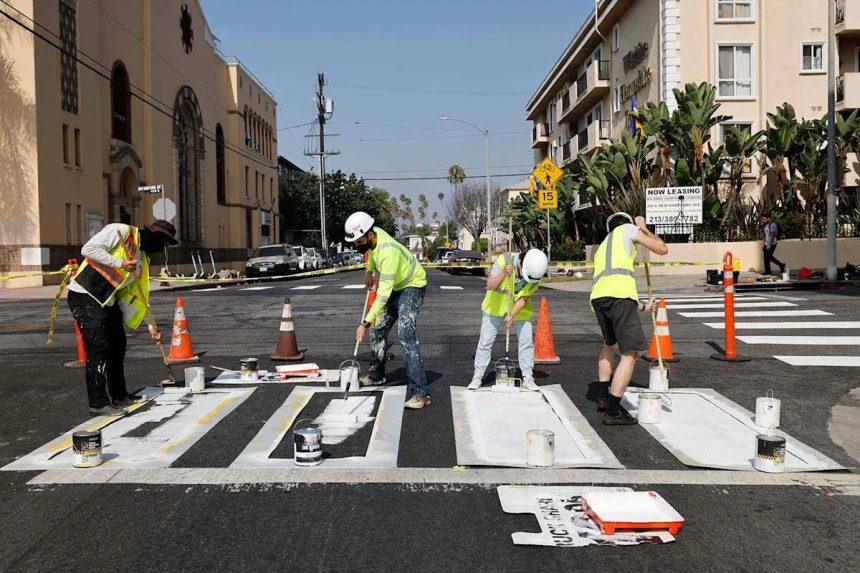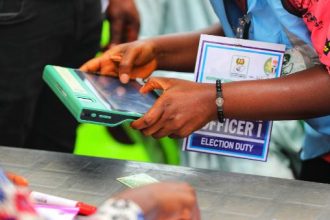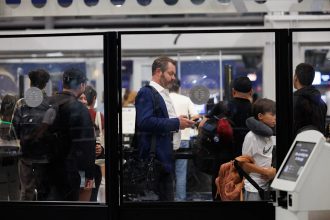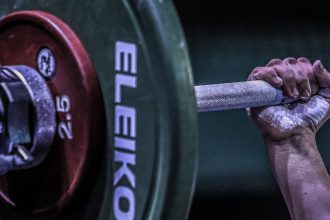NEED TO KNOW
-
Tired of waiting for city officials, Crosswalk Collective LA has painted over a hundred crosswalks at dangerous intersections across Los Angeles
-
Over the past three years, the guerrilla group of sorts has been fined and ticketed for their actions but they believe that has also spurred real change
-
“We started painting,” says one member, “to make our communities safer”
Three days after 9-year-old Nadir Gavarrete was fatally hit by an RV while crossing a street in Los Angeles’ Koreatown neighborhood, Bianca Cockrell knew exactly what she and her anonymous group of volunteers—who surreptitiously paint crosswalks on the city’s streets—needed to do.
“We’d been planning on painting a different intersection in another part of town,” she recalls. “But when I heard about that boy being hit [this summer], I said, ‘We gotta get over there. We gotta go paint there,’ and everybody agreed.”
On Aug. 2, Cockrell and other members of Crosswalk Collective LA, a guerrilla group of sorts, went to work painting white stripes at the four-way intersection, complete with the inscription: “En Memoria De Nadir Gavarrete.”
The fact that Department of Transportation officials had started soliciting feedback from residents about the dangerous intersection way back in 2021 without taking any action wasn’t lost on Cockrell, a 30-year-old documentary filmmaker and bookstore employee, she says.
Crosswalk Collective LA was created partially out of frustration over what some residents say is the city’s slow approach to making their roads less deadly for pedestrians — a local example of an alarming problem around the country.
“Going through the proper channels [to get a crosswalk installed] can take years and years and years, and your request can still get rejected,” says Cockrell. “So we started thinking, ‘Maybe we can change things ourselves. Maybe we can do things to make our communities safer.’ … So we started painting.”
The collective’s mission—like that of other street safety advocacy groups across the country—is a grassroots solution to the rise in roadway fatalities, especially in L.A., which has one of the country’s highest death rates.
Most traffic victims in the U.S. are killed in vehicles, but the rate of pedestrian deaths is increasing faster: In 2024, 7,148 pedestrians were killed by automobiles, and tens of thousands of victims required hospitalization.
Courtesy of Crosswalk Collective LA
Before and after shots of an intersection painted by the group in LA’s Koreatown neighborhood.
Pedestrian deaths are also near a four-decade high, up 48 percent from just 10 years ago, according to the latest statistics from the Governors Highway Safety Association, even as fatalities have dropped in dozens of other developed countries in Asia, Europe and elsewhere, the Centers for Disease Control and Prevention found.
Beyond driver distraction — from phones and dashboard touch screens, for instance — the CDC has pointed to the growing number of large, heavy vehicles like SUVs and to America’s penchant for complicated, high-speed roadways.
“We prioritize driving and driving fast much more than pedestrians,” says Wes Marshall, a professor of civil engineering at the University of Colorado Denver.
“The problem is solvable,” he says. “But it’s not going to be easy.”
Crosswalk Collective started their efforts in 2022 and have painted over a hundred crosswalks at four-way intersections (where stop signs exist) around L.A. Over the years, Cockrell says they’ve received “hundreds and hundreds” of requests from residents through their website.
“People are so desperate,” she says.
Take PEOPLE with you! Subscribe to PEOPLE magazine to get the latest details on celebrity news, exclusive royal updates, how-it-happened true crime stories and more — right to your mailbox.

Carlin Stiehl / Los Angeles Times via Getty
Crosswalk Collective LA at work in August
Each painting project, using hardware-store supplies, costs around $60 and takes several hours to complete. When they started out, the group assumed they would be doing their work in the middle of the night — but soon realized the paint they were using required sunlight in order to properly dry, so now their work begins in the early morning hours.
Not surprisingly, city officials take a less than enthusiastic view of their handiwork.
“We’ve gotten cited before and written up for illegal graffiti,” says Cockrell, who estimates that the collective has paid around $1,000 in fines.
When asked about the group’s activities, DOT spokesperson Colin Sweeney stressed that residents requesting street safety improvements should “work with LADOT by using the city’s 311 [phone, website and app] system.”
Sweeney adds that the since 2024, nearly 1,500 crosswalks have been installed across L.A.: “The city is … is always exploring new opportunities to streamline processes.”
A handful of those new crosswalks, insists Cockrell, came about due to her group’s work, some of which has been quickly removed by the LADOT—only to be replaced by a city-sanctioned crossing.
“I’d say between a third and a half of our crosswalks are removed and just erased, leaving nothing there,” Cockrell says. “But half of what they remove is replaced with traffic circles and full-length, full-sized regulation crosswalks.”
Every time that happens, Cockrell and others in the collective are thrilled to realize that their projects have actually made a difference.
“We’re not doing this to embarrass anyone,” she says. “We’re doing it because we want to feel more safe. And if the city wants to replace our work with better stuff, we love that.”
Read the original article on People









